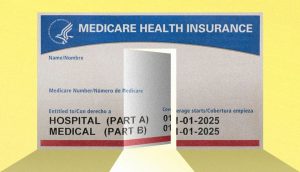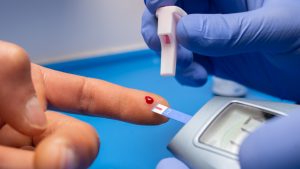Managing hypertension (high blood pressure) is crucial for individuals with diabetes, as both conditions can exacerbate each other and increase the risk of serious health complications. A well-rounded approach that includes a balanced diet and regular exercise is essential for controlling hypertension and maintaining optimal health. In this article, we’ll explore effective dietary and exercise strategies that can help manage hypertension while living with diabetes.
The Importance of Diet and Exercise in Managing Hypertension and Diabetes
Both diet and exercise play a significant role in controlling blood pressure and blood glucose levels. Here’s why focusing on these areas is particularly important:
Blood Pressure Control: Dietary choices and physical activity directly influence blood pressure levels. Adopting a heart-healthy diet and engaging in regular exercise can help lower blood pressure and reduce the risk of cardiovascular complications.
Blood Glucose Management: Diet and exercise are fundamental components of diabetes management. A balanced diet and consistent physical activity help regulate blood glucose levels, which is vital for overall health and well-being.
Weight Management: Maintaining a healthy weight is beneficial for both hypertension and diabetes. Excess weight can contribute to high blood pressure and poor blood glucose control, so achieving and maintaining a healthy weight can improve both conditions.
Dietary Strategies for Controlling Hypertension
A well-balanced diet is key to managing hypertension and diabetes. Here are some dietary strategies to consider:
1. Follow the DASH Diet
DASH Diet Overview: The Dietary Approaches to Stop Hypertension (DASH) diet is designed to reduce blood pressure. It emphasizes the consumption of fruits, vegetables, whole grains, lean proteins, and low-fat dairy while reducing sodium, saturated fats, and added sugars.
Benefits for Diabetics: The DASH diet also helps manage blood glucose levels by promoting nutrient-dense, low-glycemic foods that have a minimal impact on blood sugar.
2. Reduce Sodium Intake
Limit Salt: High sodium intake can raise blood pressure. Aim to consume no more than 2,300 milligrams of sodium per day, or ideally 1,500 milligrams, especially if you have hypertension.
Avoid Processed Foods: Processed and packaged foods often contain high levels of sodium. Focus on cooking at home with fresh ingredients and use herbs and spices to add flavor without extra salt.
3. Increase Potassium-Rich Foods
- Potassium’s Role: Potassium helps balance sodium levels in the body and can help lower blood pressure. Incorporate foods rich in potassium such as bananas, sweet potatoes, avocados, and spinach into your diet.
4. Monitor Carbohydrate Intake
Choose Complex Carbs: For diabetes management, focus on complex carbohydrates with a low glycemic index, such as whole grains, legumes, and vegetables. These foods help maintain stable blood glucose levels and support overall cardiovascular health.
Limit Added Sugars: Reduce intake of sugary foods and beverages that can lead to blood glucose spikes and contribute to weight gain.
Exercise Strategies for Controlling Hypertension
Regular physical activity is vital for managing both hypertension and diabetes. Here’s how to incorporate exercise into your routine:
1. Engage in Aerobic Exercise
Types of Aerobic Exercise: Activities such as brisk walking, swimming, cycling, and jogging are effective for lowering blood pressure and improving cardiovascular health. Aim for at least 150 minutes of moderate-intensity aerobic exercise per week.
Consistency is Key: Regular aerobic exercise helps strengthen the heart, improve blood flow, and regulate blood glucose levels.
2. Incorporate Strength Training
Benefits of Strength Training: Resistance exercises, such as weight lifting or bodyweight exercises, can help build muscle mass, improve metabolism, and support weight management. Aim to include strength training exercises at least two days per week.
Balance with Aerobics: Combine strength training with aerobic activities for a well-rounded fitness routine that benefits both blood pressure and blood glucose control.
3. Include Flexibility and Balance Exercises
- Stretching and Yoga: Incorporating flexibility and balance exercises, such as stretching or yoga, can improve overall fitness, reduce stress, and support joint health. These activities can also enhance relaxation and contribute to better blood pressure control.
4. Stay Active Throughout the Day
- Reduce Sedentary Time: Avoid prolonged periods of sitting by incorporating physical activity into your daily routine. Simple changes, such as taking short walks or standing during work, can help improve overall cardiovascular health.
Conclusion
Diet and exercise are powerful tools for managing hypertension and diabetes. By adopting a heart-healthy diet and engaging in regular physical activity, you can effectively control blood pressure, support blood glucose management, and improve your overall health.
Focus on incorporating nutrient-dense foods, reducing sodium intake, and maintaining a consistent exercise routine. Remember that achieving and maintaining a healthy weight is also beneficial for both conditions. Consult with your healthcare provider to develop a personalized plan that addresses your specific needs and helps you achieve your health goals.
Taking proactive steps in your diet and exercise routine can make a significant difference in managing both hypertension and diabetes, leading to a healthier and more fulfilling life.
E4 Helps you:
At E4, we’re dedicated to revolutionizing how people manage type 2 diabetes through our innovative E4 Alive program. Our team of specialists has joined forces to create a comprehensive solution aimed at empowering individuals to take charge of their health journey. With personalized support and resources tailored to each person’s unique needs, we make managing diabetes simpler and more effective than ever before.
E4 Alive offers a range of tools and resources to help you better understand and control your blood sugar levels. Our program provides personalized guidance to create a healthy eating plan and integrate regular physical activity into your daily routine. Plus, you’ll have access to a supportive community of individuals who understand your challenges and are there to offer encouragement and guidance every step of the way.
By joining E4 Alive, you can effectively manage your blood glucose levels, improve long-term glycemic control, reduce your risk of diabetes-related complications, and enhance your overall quality of life. It’s not just a program; it’s an opportunity to reclaim your health and vitality. Ready to start your journey to better health? Visit THIS PAGE to learn more about E4 Diabetes Solutions and the E4 Alive program.
To learn more about E4 Diabetes Solutions and the E4 Alive program, visit THIS PAGE.

Type 2 Diabetes: Is It Really Reversible?
A recent National Geographic article [link] explores how type 2 diabetes could be reversible with the right approaches. This condition, which affects millions of people worldwide, has long been considered a chronic and progressive disease. However, recent research challenges this perception and suggests that with lifestyle changes and the right approach, remission is possible. The

How Do GLP-1 Drugs Compare? A Breakdown of Ozempic, Mounjaro, and Trulicity
GLP-1 receptor agonists have revolutionized diabetes management, with drugs like Ozempic, Mounjaro, and Trulicity leading the market. But how do these medications compare in terms of effectiveness, side effects, and patient outcomes? Let’s explore their differences and what they mean for diabetes patients. Understanding GLP-1 Medications GLP-1 receptor agonists mimic a natural hormone that helps

Why Has Medicare Spending on Diabetes Medications Skyrocketed in 5 Years?
In the past five years, Medicare spending on diabetes medications has increased nearly fivefold, reaching $35.8 billion in 2023. This surge has been primarily driven by the growing use of GLP-1 drugs such as Ozempic, Mounjaro, and Trulicity. But what is behind this cost escalation, and how does it affect patients and the U.S. healthcare

The Gut Microbiota and Blood Sugar Control: A Hidden Connection
The human gut is home to trillions of bacteria that play a crucial role in digestion, immune function, and even metabolism. Recent research has revealed a fascinating link between the gut microbiota and blood sugar regulation, shedding light on how the balance of microbes in our intestines can influence diabetes risk and overall metabolic health.

The Dawn Phenomenon: Why Blood Sugar Rises While You Sleep
For many people with diabetes, waking up with high blood sugar levels can be frustrating—especially if they didn’t eat anything overnight. This early-morning spike in blood glucose is known as the Dawn Phenomenon, and it happens due to natural hormonal changes in the body. But why does it occur, and how can it be managed?

The Influence of Red Light on Blood: Can It Improve Diabetes?
Type 2 diabetes is a metabolic disease characterized by insulin resistance and elevated blood glucose levels. In the search for complementary alternatives to improve glycemic control, red light therapy has gained attention due to its potential to enhance circulation, reduce inflammation, and optimize cellular function. But what does science say about it? ✨ What is

